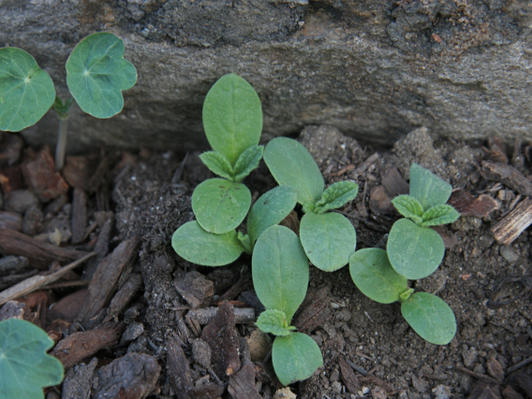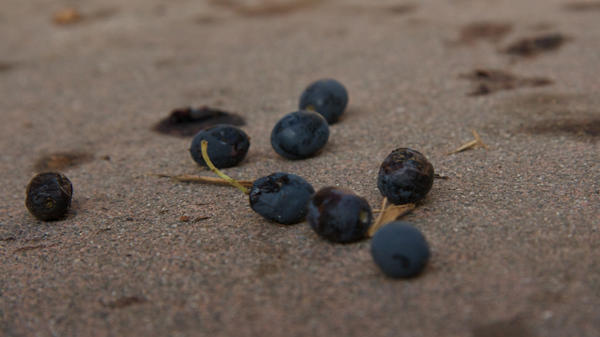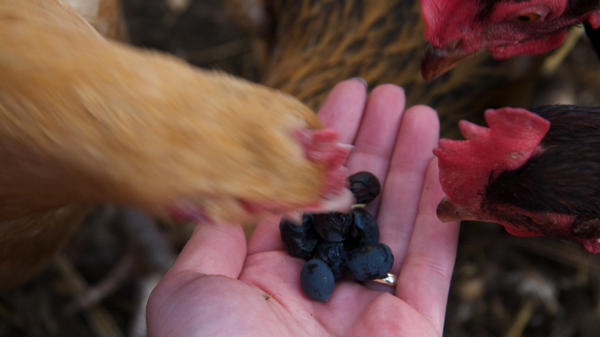
“Gifts” from the garden? Volunteer sprouts, pretty, but icky, olives

It’s started raining here in Northern California. Finally, two months after the calendar officially declared it autumn, it’s feeling truly autumnal. Cloudy mornings, early sunsets.
We’ve overhauled the Test Garden somewhat in the past few months, pulling out some underperforming roses and planting a new flower bed from seed.
Only problem, of course, is that what’s mostly taken root are volunteers—plants that in other circumstances would be welcome, but in the middle of my seeded bed are nothing but pests. Below, nasturtiums (on the left) and borage, whose cucumber-scented sprouts vigorously colonize any damp, well-composted piece of soil.
The other thing we have a lot of are olives, falling from a giant, decades-old tree that stretches over our chicken coop and part of the garden. Its fruit is raining down on us at this time of year, plump and black.
Don’t they look beautiful? Yeah, that’s an illusion. The reason that they’re “ripening” on the tree so quickly is that we have olive fly, which our own oil-makers Team Olive discovered last year. Our infested fruit—a beautiful blue-black, with a lovely powdery blush—falls all over that half of the garden.
Luckily, the world provides, and our chickens eat. They are mad for the nasturtium sprouts—can’t get enough of the borage—and they even love the maggot-infested olives. Check it out.
Last year, I was worried about them eating whole olive pits, but since then I’ve learned some things about the intricacies of chicken digestive systems. In short: Chickens have two stomachs, the glandular one called the proventriculus and the mechanical one, the gizzard. Sometimes people call all animal entrails “the gizzards,” but it’s a real organ with a specific meaning. It’s where the grit and small stones that chickens eat end up; they help grind up the hard seeds and other fibrous foods that are part of a healthy chicken’s diet.
The garden gives, the chickens take. It’s got a nice circle-of-life quality to it.
by Elizabeth Jardina, Sunset researcher




